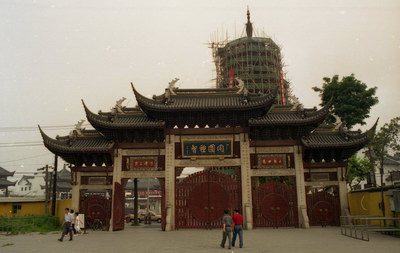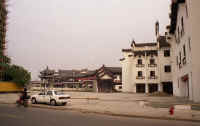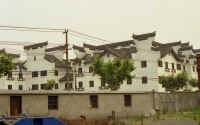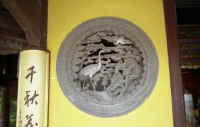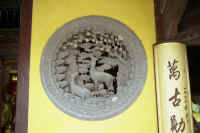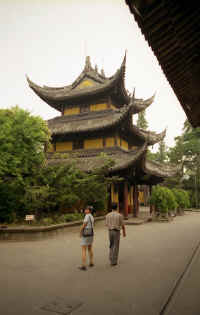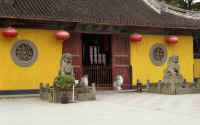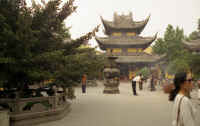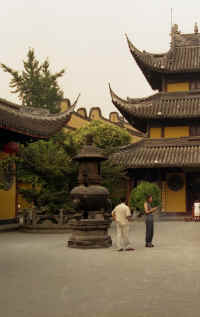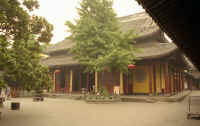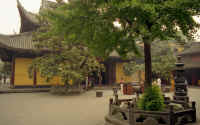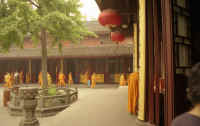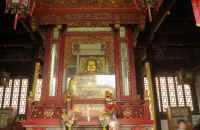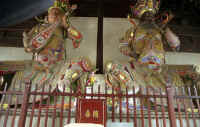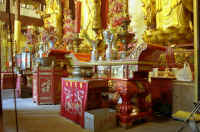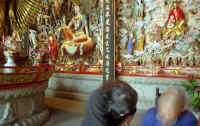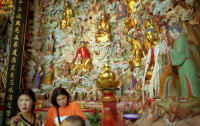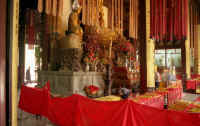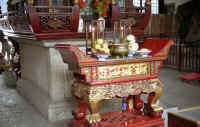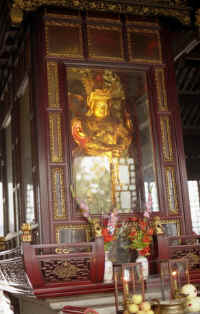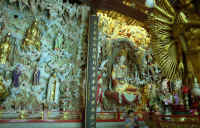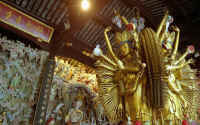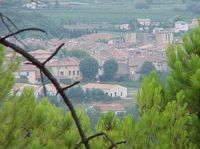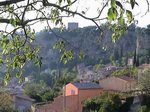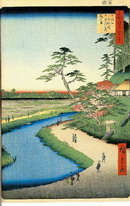Shanghai
La pagode et le temple de Long Hua
Juin 2000
Shanghai Shanghai Chine chine pagode bouddha temple Longhua
Cliquez sur une image pour en obtenir un agrandissement.
Habituellement la grande pagode est située à l'intérieur du temple dans les temples les pus anciens. Cela a changé sous la dynastie des Tang qui ont favorisé la construction de ces pagodes à coté des temples.
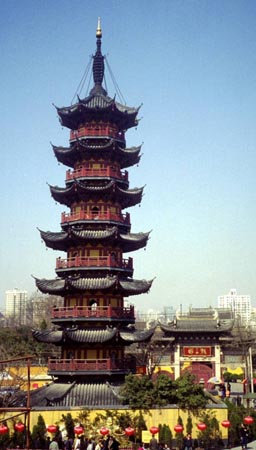
Located on the Longhua Road at the south of the city, Longhua Park is famous for the ancient Longhua Temple, Longhua Pagoda, the Evening Bell-Striking Ceremony and the peach blossoms. First built in 242 AD, which is during the period of the Three Kingdoms, Longhua Temple is the oldest temple in Shanghai for its long history of over 1700 years. Because of the several destructions by the wars, most of the buildings in Longhua Temple were reconstructed during the reign of the Emperor Tongzhi and Guangxu in the Qing Dynasty. Besides its long history, Longhua Temple is the largest temple in Shanghai. It occupies an area of over 20,000 square meters (five acres) and the architectural proportion is about 5,000 square meters (one point two acres). Along the 194 meters long (637 feet) axis are the Maitreya Hall (Miledian), Devajara Hall (Tianwangdian), Mahavira Hall (Daxiongbaodian), Three Sages Hall (Sanshengdian), Abbot's Hall (Fangzhangshi) and the Sutras Keeping Hall (Cangjinglou) which keeps the three treasures of the temple including the Dazang sutras, the gold seals and the Buddhist statues. Accessory halls on the two sides are the Bell Tower and the Drum Tower, both of them are furnished with the same hexagonal windows and the curved eaves. The whole courtyard was built strictly in the style of traditional Buddhist symmetry and it's in accordance with the Chinese concept of beauty. A venerable copper bell which is two meters in height, one point three meters in diameter and weighs five tons (11,023 pounds) is placed on the three-storied Bell Tower. The Evening Bell-Striking Ceremony on 31st December is regarded as one of the eight great attractions of Shanghai. Welcoming the New Year in the melodious, heavenly sound of the bell is an interesting and memorable experience. The seven-storied, 40.4 meters high Longhua Pagoda stands in front of the Longhua Temple, the brick body and the wooden staircases make up the main structure of the Longhua Pagoda. Each storey is smaller than the storey below, and all the levels are encircled by balconies and banisters. Bells on each corner of the octagonal eaves make cheerful and lively sounds as the wind passes by. Longhua Pagoda has been rebuilt several times, but the style of the Song Dynasty still remains to today. In late spring, when the peaches in Longhua Park are in full blossom and the temple fair (on the 3rd March, lunar calendar) is under way, large numbers of tourists and pilgrims will come and the Longhua will become a place of great hustle and hustle.
Cliquez sur une image pour en obtenir un agrandissement.
Cliquez sur une image pour en obtenir un agrandissement.
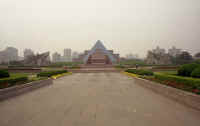 |
Le parc des martyrs de la
révolution de Long Hua.
La ville de Shanghai au loin, avec ses grattes ciels, apparaît comme un dernier pied de nez... |
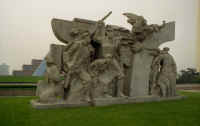 |
